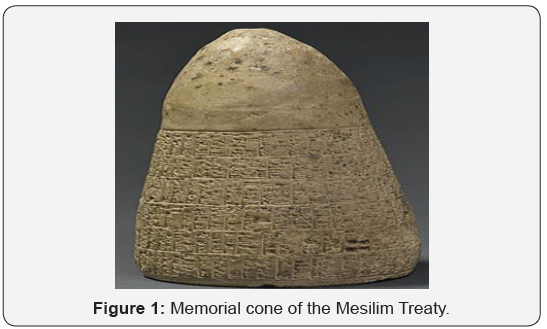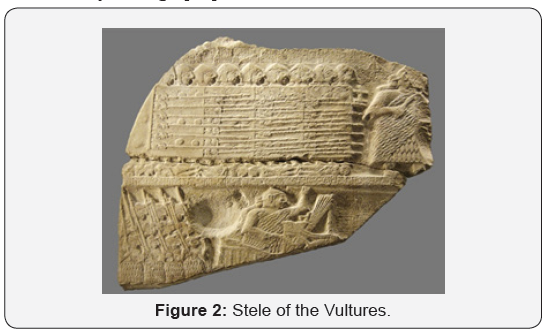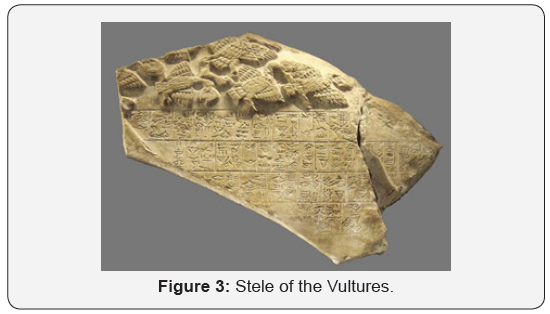Mesopotamia 2550 B.C.: The Earliest Boundary Water Treaty-Juniper Publishers
Archaeology & Anthropology- Juniper Publishers
Mini Review
Mesilim [or Mesalim, born ca. 2600 B.C.] was the
ruler of Kish, a kingdom north of Lagash and Umma, which held a
traditional ‘hegemonic’ position in the loose alliance of small
adjoining Sumerian city-states in the region between the Tigris and
Euphrates rivers, south of what was to become Babylon [4]. Because of
the prevailing precarious rainfall conditions, the agricultural economy
of the entire delta area has always been crucially dependent on
irrigation [5], mainly from the ‘great Tigris’, through an elaborate
system of canals and levees which inevitably require close
inter-community cooperation. The geographic focus of the bilateral
Lagash-Umma agreement, concluded under Mesilim’s authority as external
arbiter, was the fertile Gu-edena valley, roughly ten by four kilometers
wide and irrigated by Tigris waters from a canal named Lum-magirnunta
(probably the modern Shatt al-Hayy) on the border between Umma and
Lagash, with boundaries marked by stone steles.
Part of the treaty was a crop-sharing arrangement for
a portion of boundary land (some eleven square kilometers) downstream
on Lagash territory, that was cultivated by Umma under lease, against
payment of an annual rental fee (máš, calculated in silver-shekel
equivalents of barley crops) to cover the costs of canal maintenance
[6]. However, when Umma repeatedly refused to honor its accumulated
tenancy debts, hostilities broke out, resulting in partial destruction
of the canal and in unilateral diversions of water upstream. In several
successive military confrontations (‘the first known war in
history that was, in essence, fought about water’) [7], Umma was
ultimately defeated by Lagash (first under the leadership of E’anatum,
ca. 2470 B.C.; and later under his nephew Enmetena, ca. 2430 B.C.) [8],
and was forced to accept the reconstruction (and extension) of the canal
and the reinstatement of the boundaries as originally drawn up by
Mesilim.

Alas, the treaty so renewed and ‘writ in stone’, and
the peace so re-established, does not seem to have survived for long,
and was eventually overtaken and mooted by external political events
(the Akkadian/Sargonic invasions) in subsequent generations. Even so,
the agreement has been hailed as ‘the first international arbitration’
[9], and as ‘the oldest treaty of which there is a reliable record’
[10]. It remains a unique early attempt at resolving a dispute over
boundary waters by formal reference to a superior spiritual order (in
this case, the deities of both parties, repeatedly ‘sworn to’ in the
text), and hence may indeed
qualify as a precursor of international law in this field – well
over 4,000 years ago [11].





Comments
Post a Comment